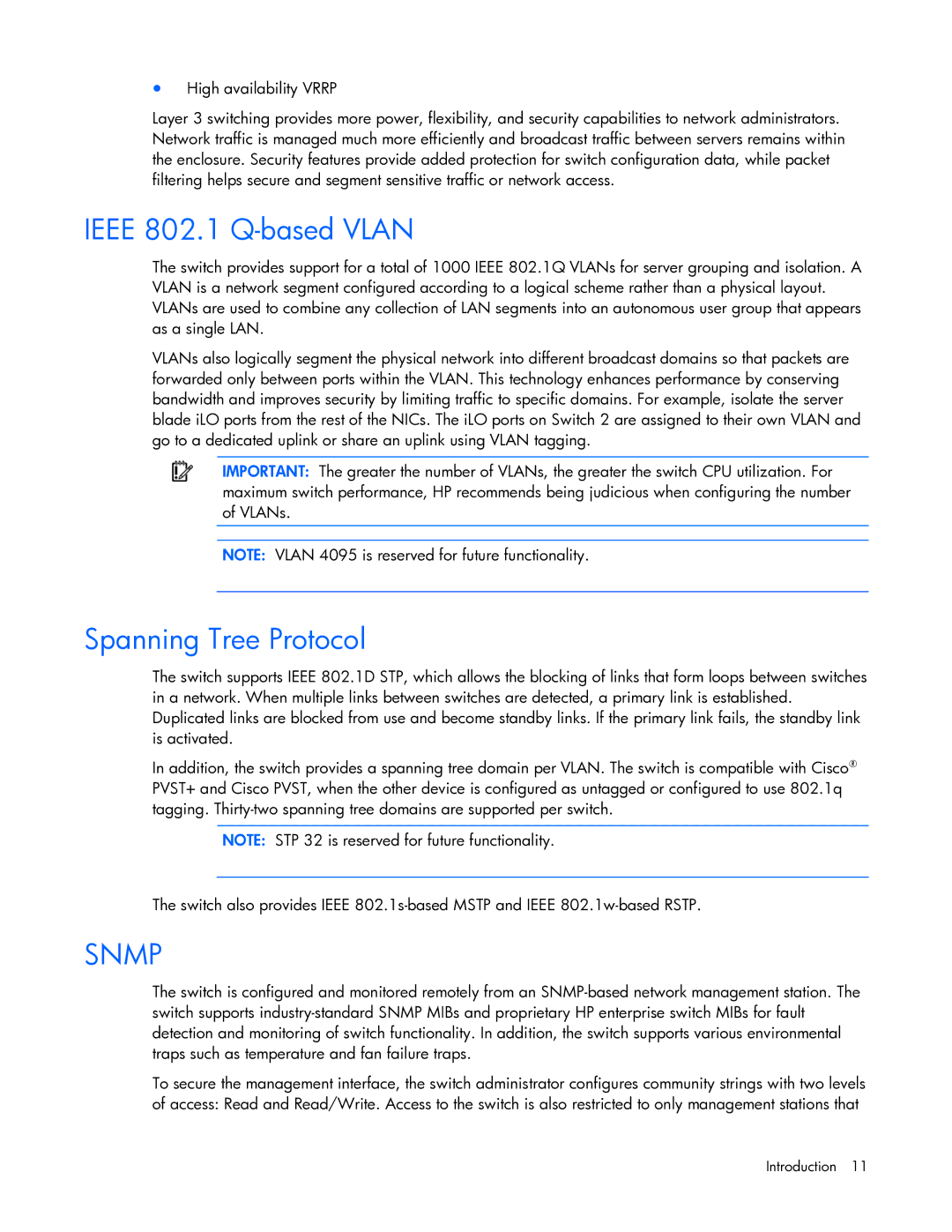
•High availability VRRP
Layer 3 switching provides more power, flexibility, and security capabilities to network administrators. Network traffic is managed much more efficiently and broadcast traffic between servers remains within the enclosure. Security features provide added protection for switch configuration data, while packet filtering helps secure and segment sensitive traffic or network access.
IEEE 802.1 Q-based VLAN
The switch provides support for a total of 1000 IEEE 802.1Q VLANs for server grouping and isolation. A VLAN is a network segment configured according to a logical scheme rather than a physical layout. VLANs are used to combine any collection of LAN segments into an autonomous user group that appears as a single LAN.
VLANs also logically segment the physical network into different broadcast domains so that packets are forwarded only between ports within the VLAN. This technology enhances performance by conserving bandwidth and improves security by limiting traffic to specific domains. For example, isolate the server blade iLO ports from the rest of the NICs. The iLO ports on Switch 2 are assigned to their own VLAN and go to a dedicated uplink or share an uplink using VLAN tagging.
IMPORTANT: The greater the number of VLANs, the greater the switch CPU utilization. For maximum switch performance, HP recommends being judicious when configuring the number of VLANs.
NOTE: VLAN 4095 is reserved for future functionality.
Spanning Tree Protocol
The switch supports IEEE 802.1D STP, which allows the blocking of links that form loops between switches in a network. When multiple links between switches are detected, a primary link is established. Duplicated links are blocked from use and become standby links. If the primary link fails, the standby link is activated.
In addition, the switch provides a spanning tree domain per VLAN. The switch is compatible with Cisco® PVST+ and Cisco PVST, when the other device is configured as untagged or configured to use 802.1q tagging.
NOTE: STP 32 is reserved for future functionality.
The switch also provides IEEE
SNMP
The switch is configured and monitored remotely from an
To secure the management interface, the switch administrator configures community strings with two levels of access: Read and Read/Write. Access to the switch is also restricted to only management stations that
